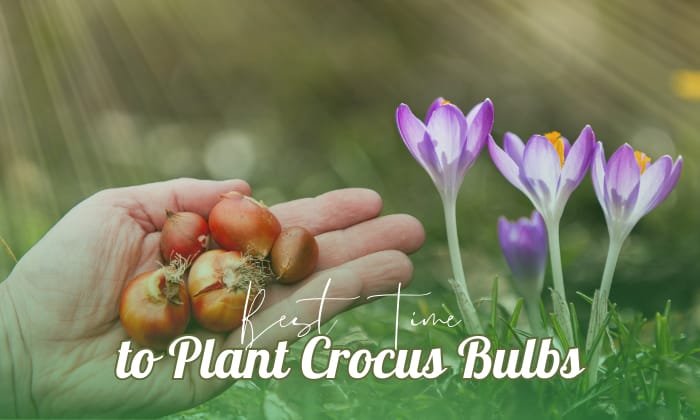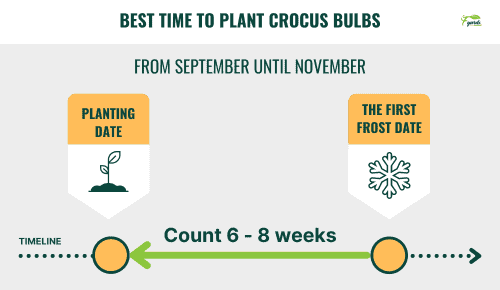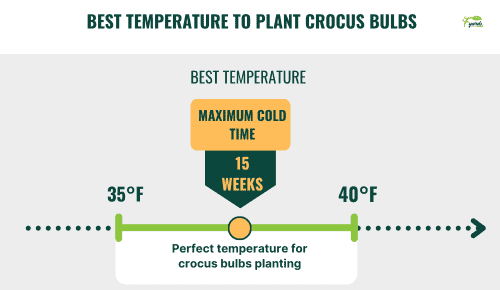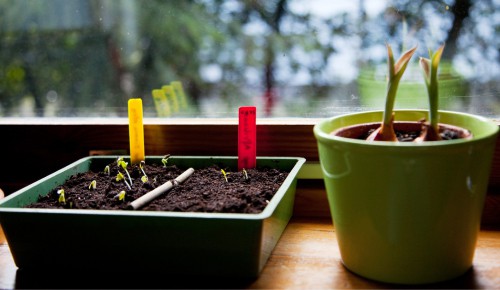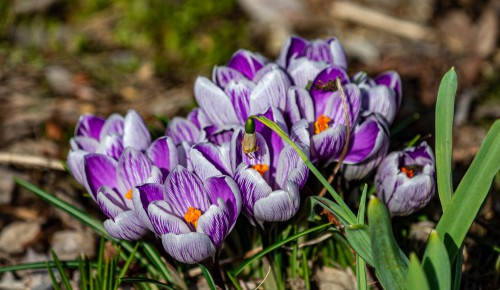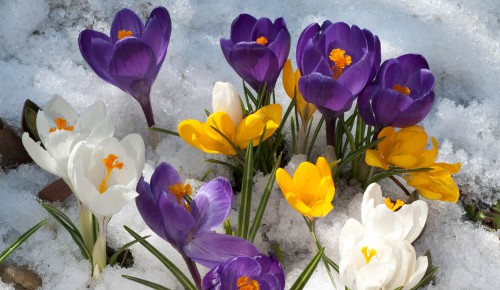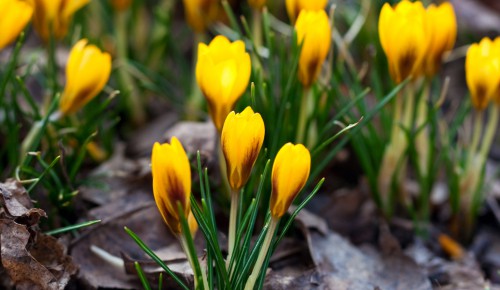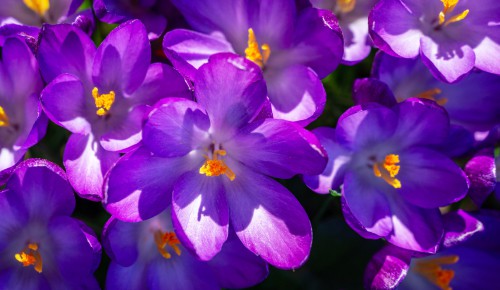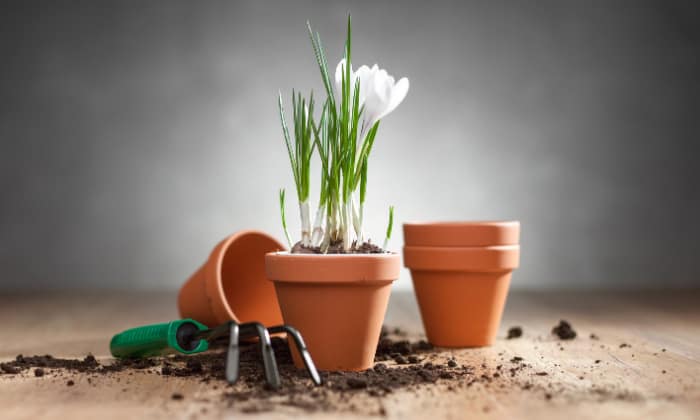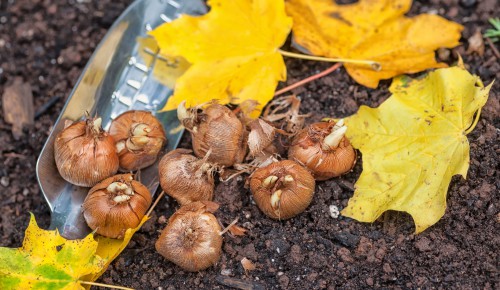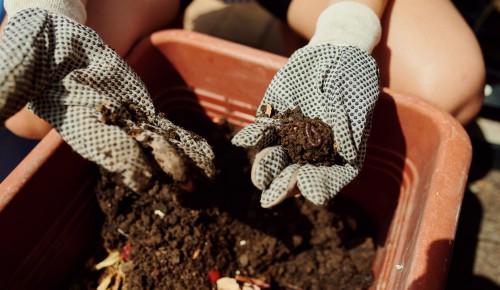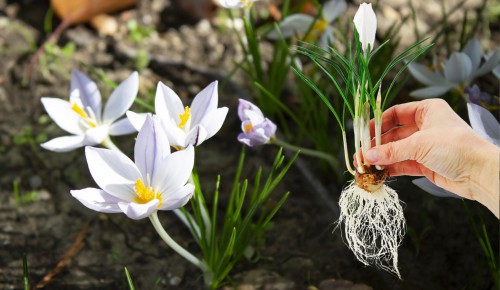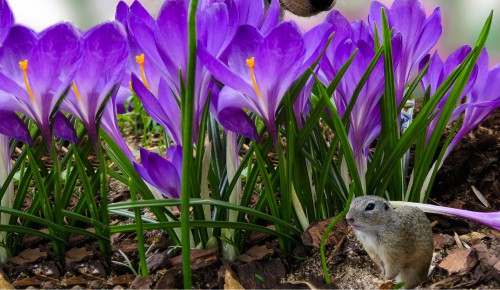Do you want a garden full of blooming colors yet have little time to cultivate one? The best solution to your dilemma is planting crocus bulbs. Not only do these flowers require less maintenance and care, but they can also beautify your garden during the fall season.
If you are curious about when to plant crocus bulbs, the best time is from September until November. Read on to know more!
Table of Contents
Factors to Consider to Know Crocus Planting Time
1. Season and weather
For crocuses to get healthy and pretty blooms, they must enjoy a more extended period of dormancy in the cold. Planting them 6 to 8 weeks before the first frost will buy the corms some time to establish their roots before winter.
During the chilly months, the bulbs will undergo a process called vernalization, in which plants do not sprout to avoid getting zapped by low temperatures.
Thus, if you plant crocus bulbs in the lawn during the fall, your yard will be filled with colorful petals in the spring.
2. USDA hardiness zone
Research shows that temperature plays a significant role in crocus bulb planting. The weather conditions from one place to another may affect how it produces flowers. Most planters use the USDA hardiness zone system to know when and where to plant crocus.
The best climate for crocus to grow is at least 35 to 45 degrees F with a maximum of 15 weeks in the cold.
Usually, crocus thrives in zones 3 to 8 in the US. People in zones 3 to 6 should plant outdoors in September and October, while residents in higher hardiness regions should wait until a month later.
The maximum post-dormancy temperature to ensure crocus bloom time in spring and summer is 60 degrees Fahrenheit.
3. Indoor planting
Crocuses are classified as cold-resistant spring bulbs, similar to tulips. Thus, they can be cultivated in pots in the fall to achieve indoor blooming during late winter.
In doing this, make sure to put your bulb in a cool part of your house for 12 to 15 weeks. It is advisable to store them in a garage or basement under 33 to 45 degrees Fahrenheit.
After this period, transfer the pots to a sunlit part of the house, preferably near a window where the temperature is under 65 degrees F.
Types of Crocus to Plant
1. Large-flowered dutch Crocus
This variety is taller than the other types. It usually grows between 4 to 6 inches. Dutch Crocus blooms for three weeks in early spring.
The interesting fact about this calyx-shaped flower is that it only opens its bud when there is a generous amount of sunlight. Whenever it rains and evening comes, the crocus closes up its petals.
2. Snow Crocus (Crocus chrysanthus)
Snow Crocus is one of the varieties of crocus that blooms earlier. It has small flowers with vibrant colors, such as yellow, purple, and white shades. It usually grows up to 4 inches tall and prefers well-drained soil with total sun exposure.
Snow crocuses tend to bloom in January.
3. Golden Yellow Crocus (Crocus x luteus)
Golden Yellow Crocus is a variety that produces vibrant yellow flowers. These croci have smaller-sized flowers compared to other types.
4. Ruby Giant Crocus (Crocus vernus’ Ruby Giant’)
Ruby Giant Crocus is a striking variety with large, deep purple flowers. Its petals can stand out astonishingly against green foliage, and the plant can reach a height of 3 to 4 inches. This variety usually blooms in February or in March.
| Variety | USDA Hardiness | Water Needs | Exposure | Blooming Season |
| Large-flowered dutch crocus | 3 to 8 | Average | Full/Partial Sun | Early Spring |
| Snow crocus | 3 to 8 | Average | Full/Partial Sun | Winter and Early Spring |
| Golden yellow crocus | 3 to 8 | Average | Full/Partial Sun | Early Spring |
| Ruby giant crocus | 3 to 8 | Average | Full/Partial Sun | Winter and Early Spring |
How to Plant and Grow Crocus: Care and Maintenance
1. Growing crocus from bulbs
When do crocus bloom if the seeds are planted outdoors? You can grow crocus from seed, but it can take many growing seasons for the seeds to germinate.
It is recommended to plant bulbs rather than seeds for faster results. Plant your bulbs 3″ apart and 4″ deep. Growing them in your garden is better when the soil is 60 degrees F or colder.
2. Soil and water
Make sure to plant crocus in well-drained soil. Mix sand, peat moss, and compost when planting seeds or bulbs.
Water the corms after sowing and give them an inch of moisture per week, stopping only when dormancy approaches.
3. Pruning
Pruning crocus plants is generally unnecessary as they are small, low-growing bulbs that do not require extensive maintenance. After the flowers have faded and the foliage turns yellow, it is advisable to leave the crocus intact until it completely withers. This allows the plant to replenish the bulb with energy for the next blooming.
4. Pest and disease control
Animals like squirrels often disturb and consume crocus bulbs, making them a common adversary.
To combat this, one option is to plant the bulbs deeper than usual, although this approach may impact their growth. Alternatively, you can protect your beds by encircling them with mesh or chicken wire.
Another challenge arises from spider mites and other arachnids. To alleviate these issues, it is crucial to remove weeds regularly and clear up hiding spots like bushes and rocks.
FAQs
Do crocus bulbs multiply?
Yes, crocus bulbs can multiply and naturalize over time. Crocus bulbs can produce offsets or “cormlets” that develop alongside the original bulb when planted in suitable conditions.
Over several years, a small planting of crocus bulbs can expand into a larger group, creating a more significant display of flowers.
Are Crocus flowers deer-resistant?
Yes, crocus flowers are generally considered deer-proof. Their bulbs, leaves, and flowers taste bitter, which deters deer from eating them.
Should I fertilize Crocus bulbs?
Crocus care does not require heavy fertilization. It’s best to amend the soil with organic matter, such as compost, before planting. A balanced bulb fertilizer can be applied in the fall according to the package instructions.
Conclusion
This guide gave you a clear view of where, how, and when to plant crocus bulbs. Whether grown in gardens, containers, or naturalized areas, these small but mighty bulbs bring joy and beauty to the early spring landscape.
So, embrace the charm of crocus flowers and let them brighten your surroundings with their cheerful blooms and enduring allure.

Hi, I am William – Floridayards’ digital content creator. My job is to find answers to all your concerns with thorough research and our team’s expert advice. I will also bring you honest reviews on the best products and equipment for raising your beautiful garden. Please look forward to our work!


